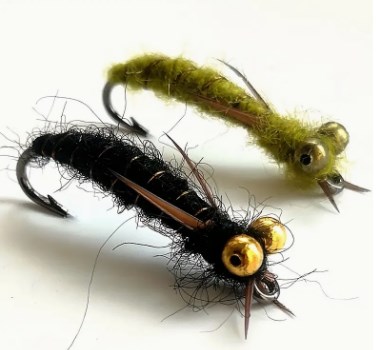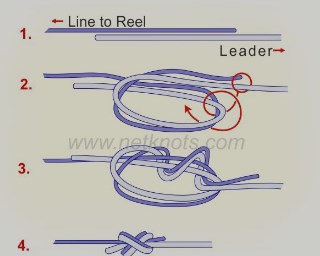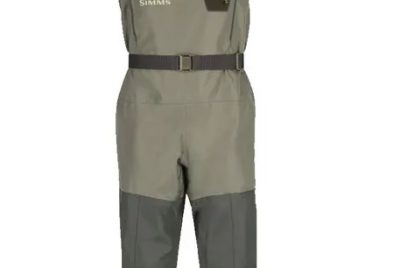Fly Fishing Bugs
As a passionate fly angler, there’s nothing quite like the thrill of casting a perfectly matched fly to fool a hungry trout. Understanding the intricate world of fly fishing bugs is essential for success on the water. In this guide, I’ll delve into the fascinating realm of fly fishing bugs, exploring their types, life cycles, fishing techniques, and more. So grab your fly rod, tie on your favorite bug pattern, and let’s dive into the world of fly fishing bugs.
Introduction

Fly fishing bugs, also known as aquatic insects, play a crucial role in the diet of freshwater fish, particularly trout. These tiny creatures form the foundation of the aquatic food chain and serve as primary food sources for fish throughout their life stages. As fly anglers, understanding the behavior, habitat, and life cycles of fly fishing bugs is essential for effectively matching the hatch and enticing fish to strike our flies.
Types of Fly Fishing Bugs
Fly fishing bugs come in a variety of shapes, sizes, and colors, each with its unique characteristics and behaviors. Some of the most common types of fly fishing bugs include:
- Mayflies: Known for their delicate appearance and upright wings, mayflies are a favorite food source for trout, particularly during hatches.
- Caddisflies: Caddisflies are characterized by their tent-shaped wings and are often found near rivers and streams. They are an important food source for trout throughout the year.
- Stoneflies: Stoneflies are robust insects with flat bodies and long antennae. They are prevalent in fast-flowing streams and rivers and are a staple food for trout.
- Midges: Midges are tiny flies that resemble mosquitoes and are found in still or slow-moving waters. They are a vital food source for trout, especially during winter months.
- Terrestrials: Terrestrial insects such as ants, grasshoppers, and beetles are not aquatic but frequently end up in the water, providing trout with a tasty meal.
Understanding the characteristics and behaviors of these different bug types is crucial for selecting the right fly pattern and presenting it effectively to the fish.
Understanding Fly Fishing Bug Life Cycles
Fly fishing bugs go through four main life stages: egg, larva, pupa, and adult. Each stage presents unique opportunities for fly anglers to imitate natural insect behavior and entice fish to strike. By understanding the life cycle of fly fishing bugs, anglers can better predict when and where fish will be feeding and adjust their fishing tactics accordingly.
- Egg stage: The egg stage occurs when adult insects lay their eggs in the water, usually on the surface or near aquatic vegetation.
- Larva stage: Larvae are aquatic insects that inhabit the bottom substrate of rivers, streams, and lakes. They often resemble small worms or caterpillars and are a favorite food source for trout.
- Pupa stage: During the pupa stage, insects undergo metamorphosis and transition from larva to adult. Pupae are highly active in the water and vulnerable to predation, making them a prime target for feeding fish.
- Adult stage: Adult insects emerge from the water’s surface and take to the air to mate and lay eggs, completing the life cycle. This stage often triggers feeding frenzies among trout, especially during insect hatches.
Matching the Hatch: Fly Selection

Matching the hatch refers to selecting a fly pattern that closely resembles the insects currently present in the water. This is essential for convincing trout to take your fly, as fish are more likely to feed on familiar food items. When choosing a fly pattern, consider the size, shape, color, and behavior of the natural insects and select a fly that closely mimics these characteristics.
For example, during a mayfly hatch, choose a dry fly pattern with upright wings and a slender body to imitate the natural insect’s appearance on the water’s surface. Similarly, when fishing midge hatches, opt for small, slender patterns that closely resemble the tiny insects.
Experimentation is key when matching the hatch, as fish can be selective in their feeding preferences. Be prepared to try different fly patterns and sizes until you find one that elicits strikes from feeding fish.
Fly Fishing Techniques for Different Bug Types
Different bug types require different fishing techniques to effectively imitate their behavior and entice fish to strike. Here are some popular fly fishing techniques for fishing with various bug patterns:
- Dry fly fishing: Dry fly fishing involves presenting a buoyant fly pattern on the water’s surface to imitate adult insects floating on the surface film. This technique is particularly effective during mayfly and caddisfly hatches when fish are actively feeding on the surface.
- Nymphing: Nymphing is a subsurface fishing technique that involves presenting a weighted fly pattern below the water’s surface to imitate aquatic insect larvae and pupae. This method is highly effective for fishing stonefly and midge patterns in fast-flowing streams and rivers.
- Streamers: Streamer fishing involves casting large, brightly colored fly patterns that imitate baitfish, crayfish, or leeches. While not specifically imitating insect behavior, streamers can still be effective for enticing aggressive strikes from hungry trout, especially in larger rivers and lakes.
Experiment with different fishing techniques and observe the behavior of feeding fish to determine which approach is most effective for the bug types present in the water.
Seasonal Considerations
Bug activity varies throughout the year, with different insect species emerging at different times and in different conditions. Understanding seasonal patterns of insect activity is essential for successful fly fishing. Here are some seasonal considerations to keep in mind:
- Spring: Spring is prime time for mayfly hatches, with species like the Blue Winged Olive and Hendrickson emerging in abundance. Caddisfly activity also increases as temperatures rise, providing excellent dry fly fishing opportunities.
- Summer: Summer brings an abundance of insect activity, with hatches of mayflies, caddisflies, and stoneflies occurring regularly. Terrestrial insects such as ants, grasshoppers, and beetles also become abundant, offering additional food sources for trout.
- Fall: Fall brings cooler temperatures and fewer insect hatches, but fish remain active and hungry. Late-season mayfly hatches and midge activity can still provide excellent fishing opportunities for anglers willing to brave the cooler weather.
- Winter: Winter mayfly and midge hatches provide the main food sources for trout during the colder months. Fishing nymph patterns deep and slow is often the most effective approach for winter fly fishing.
By understanding the seasonal patterns of bug activity, anglers can plan their fishing trips accordingly and increase their chances of success on the water.
Tips for Successful Fly Fishing with Bugs

Successful fly fishing with bugs requires a combination of observation, technique, and experimentation. Here are some tips to help you make the most of your bug-inspired fly fishing adventures:
- Observe insect activity: Take time to observe the water and look for signs of insect activity, such as rising fish, floating nymphal shucks, or swarms of adult insects. This will help you determine which bug patterns to use and how to present them effectively.
- Match the hatch: Pay close attention to the insects present in the water and select fly patterns that closely resemble their size, shape, and color. Matching the hatch is essential for convincing trout to take your fly.
- Focus on presentation: Presentation is key when fly fishing with bugs. Focus on making accurate casts and presenting your fly pattern naturally on the water’s surface or below the surface, depending on the fishing conditions.
- Experiment with fly patterns: Don’t be afraid to try different fly patterns and sizes until you find one that elicits strikes from feeding fish. Carry a variety of bug patterns in your fly box and be prepared to switch flies frequently based on fish response.
- Be patient and persistent: Fly fishing with bugs can be challenging at times, but patience and persistence are key virtues of successful anglers. Stay focused, observe fish behavior, and adapt your fishing tactics as needed to maximize your chances of success.
By incorporating these tips into your fly fishing approach, you’ll be well-equipped to tackle any bug-driven fishing scenario and enjoy success on the water.
Equipment and Gear
Effective fly fishing with bugs requires the right equipment and gear to match the hatch and present your flies effectively. Here are some essential items to consider adding to your fly fishing arsenal:
- Fly rod and reel setups: Choose a fly rod and reel setup that matches the size and type of water you’ll be fishing. For small streams and rivers, a lightweight rod in the 3-5 weight range is ideal, while larger rivers and lakes may require heavier gear.
- Essential fly fishing accessories: Stock up on essential fly fishing accessories, including leaders, tippet material, floatant, and strike indicators. These items will help you fine-tune your fishing setup and improve your chances of success on the water.
- Bug-specific gear recommendations: Invest in bug-specific gear such as mayfly, caddisfly, and stonefly fly patterns in various sizes and colors. Having a well-stocked fly box with a variety of bug patterns will ensure you’re prepared for any bug-driven fishing scenario you encounter.
By equipping yourself with the right gear and accessories, you’ll be ready to tackle any bug-driven fishing scenario and enjoy success on the water.
Conservation and Ethical Practices
As fly anglers, it’s essential to practice responsible fishing and conservation ethics to ensure the long-term health of fish populations and their habitats. Here are some conservation and ethical practices to keep in mind when fly fishing with bugs:
- Catch and release techniques: Practice catch and release fishing whenever possible to minimize the impact on fish populations. Handle fish gently, use barbless hooks, and release them quickly to ensure their survival after being caught.
- Protecting bug habitats and ecosystems: Be mindful of the fragile ecosystems where bugs live and reproduce, and take steps to minimize your impact on these environments. Avoid trampling vegetation, disturbing spawning areas, or leaving behind trash or debris.
By adopting these conservation and ethical practices, you’ll help preserve bug habitats and ensure future generations of anglers can enjoy the thrill of fly fishing for years to come.
Conclusion

In conclusion, fly fishing with bugs opens up a world of exciting opportunities for anglers to test their skills and enjoy success on the water. By understanding the different types of fly fishing bugs, their life cycles, and fishing techniques, anglers can increase their chances of fooling trout and enjoying memorable fishing experiences. So next time you hit the water, don’t forget to pack your bug patterns and prepare for an unforgettable fly fishing adventure.
FAQs
1. How do I know which fly to use for fly fishing bugs?
Pay attention to the insects present in the water and select fly patterns that closely resemble their size, shape, and color. Matching the hatch is key for success.
2. What is the most effective way to imitate bug behavior on the water?
Focus on making accurate casts and presenting your fly pattern naturally on the water’s surface or below the surface, depending on the fishing conditions.
3. Are there any specific fly fishing techniques for fishing midge hatches?
Nymphing techniques are often effective for fishing midge hatches, as midges spend most of their life cycle underwater as larvae and pupae.
4. What should I do if I encounter a large mayfly or caddisfly hatch?
Take advantage of the hatch by selecting fly patterns that closely match the insects’ appearance and behavior and presenting them effectively to feeding fish.
5. How can I contribute to bug conservation efforts as a fly angler?
Practice catch and release fishing, minimize your impact on bug habitats and ecosystems, and support conservation organizations dedicated to protecting aquatic environments.




